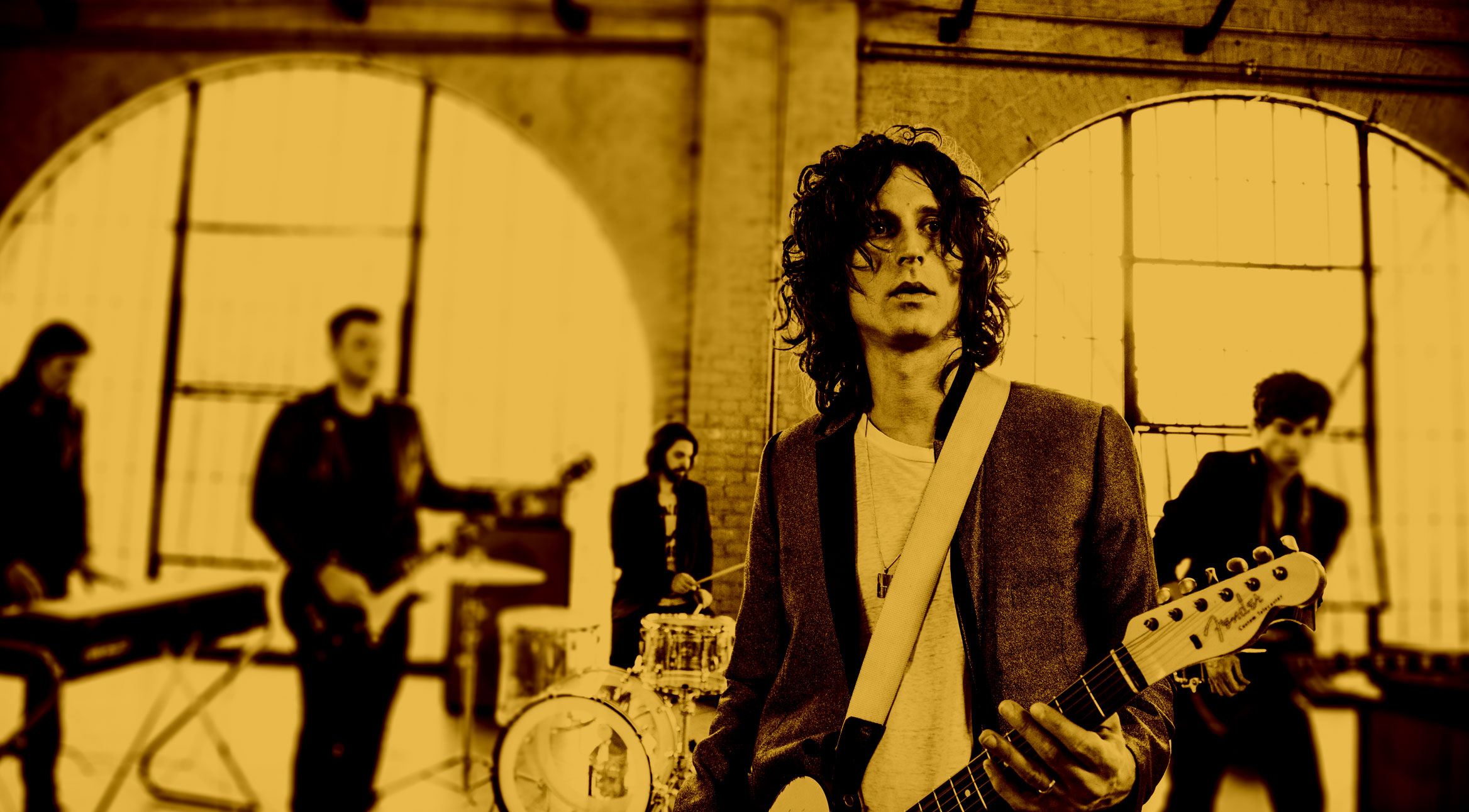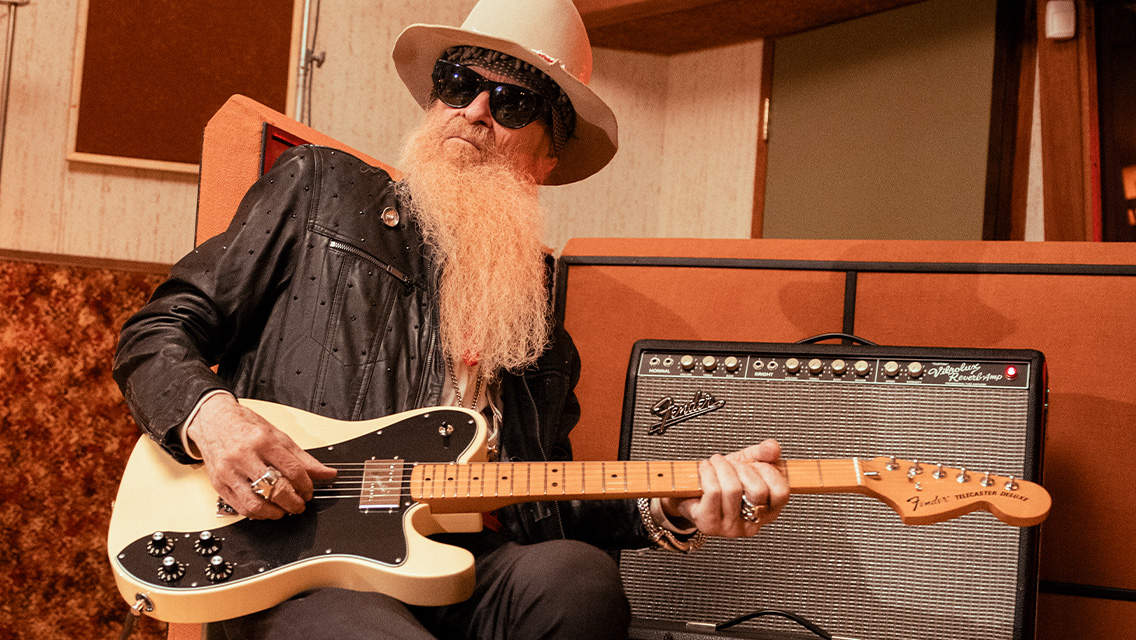
Sections
While all of his bandmates in the Strokes have pursued side musical projects in recent years, guitarist Nick Valensi typically shied away from such endeavors.
That is, until now. A few years ago, Valensi brought together keyboardist Richie James Follin, drummer Ralph Alexander, bassist Jon Safley and guitarist Darian Zahedi to create CRX, and the quintet just recently released their debut album, New Skin.
Produced by Queens of the Stone Age’s Josh Homme, New Skin draws inspiration from classic power pop outfits like the Cars, Cheap Trick and Elvis Costello. It also marks the first time Valensi has stepped behind the microphone as a frontman, even though he's been creating music since he was only 5 years old.
As he prepares to head out on tour, Fender.com caught up with Valensi to discuss his guitar journey, the dynamics of a two-guitar band and why he decided to primarily use a Telecaster with CRX.
"I grew up with guitars. My dad played, so from the time I was born there was always an acoustic guitar in my apartment … generally in tune. I don’t really remember a time when I didn’t know how to play guitar. I learned my first chord when I was about 5 or 6 years old. "
"I do have a memory of being about 4 years old, and my parents were listening to some music. I picked up this guitar and just started strumming it with my right hand, not knowing what I was doing, but it was like a natural thing. I guess I was strumming with the rhythm of the song, and my dad said, ‘Hey, you’ve got it!’ That was the first moment in my life where I felt that confidence, that I could do something. Then, I wanted my dad to show me what to do with my left hand, and he taught me some random chords. It wasn’t until my dad passed away when I was 9 that I got into playing guitar more heavily, because it was a way to keep a connection with my father."
"My first teacher was this hair metal dude with a tiny studio apartment in Manhattan that smelled like cigarettes. The blinds were always drawn, so it was pretty creepy. But he asked me what I was interested in learning, and I was into Guns n' Roses. So the first thing that I learned was the intro riff from ‘Sweet Child o' Mine.’ And in a way, I’ve been playing that riff ever since."
"The guitars that I heard on television were making these big, massive sounds, and my dinky little acoustic was definitely not creating that sound. I begged my parents for a year or more for an electric guitar. One day, I was home sick from school and my dad had a big cardboard box with a black super Strat. I got a little practice amp, and I was good to go. "
"It wasn’t until I got my first distortion pedal that things really opened up for me. I moved on to another guitar teacher and he introduced me to effects pedals. He lent me a Pro Co RAT. I didn’t know that was an option at the time, but when I stomped on it, it was a revelation for me. All of the sudden, the stars aligned and everything became clear. I had this feeling like, ‘Oh my God, that’s how they do it. These little boxes help you get those sounds!’ I couldn’t believe it."
"I was always up for a challenge. The guitar, to me, is something that I was comfortable with. Things can be really hard at first, but I knew that if I just sit here all day, I’ll be better at it by the end of that day. And if I sit here the next day, I’ll be able to do it. All it takes is a couple of days. I think musicians learn that early on and apply that to other parts of their lives. The practice and the result are so directly correlated in music, and I think that works in sports too. Hitting a baseball, for example."
"Learning barre chords was another revelatory moment for me. I had a friend—his name was Johnny Dorfman—and his dad, Gary, actually ran a recording studio. I’d go over to his house, and that was the first time I actually sat at a drum kit and learn what it feels like to talk into a microphone and have your voice come out of a big PA. His dad took a liking to me because I was into music, and one day, I showed him I knew an E chord. He said, ‘You want to know the coolest thing about that E chord? You can just keep your index finger open a little bit and move that E chord up one and it turns into an F. And then it turns into an F sharp. And then move it all the way up the neck until it’s an E chord again, just an octave up.’ That blew my f--king mind. At that moment, the guitar felt somewhat like a piano. I thank Gary Dorfman for that. I haven’t seen the guy in 25 years, but if he’s reading this, thank you."
"With the Strokes or with CRX, I want to be in a room with people who are super talented and super creative and super intelligent. My goal with those people is to impress them. If I write a song, I’m not thinking, ‘Is the world going to like this song? Are the radio stations of the world going to play this? Will people blog about this and appreciate it?’ I’m really only working to impress a handful of people, and most of them are in the room right there with me. ‘Is Fab Moretti going to like the way I arranged the riffs and the chorus of his song? Is Julian (Casablancas)going to comment on how dope my guitar solo was?’ If I can impress the people in my band and we’re all on board—individually and as a whole—other people are going to love it. That’s always been my philosophy. We’re pretty hard on ourselves, and that’s a tight filter for a song to make it through all five guys, whether the Strokes or CRX."
"Having two guitars in a band is a luxury. You’ve always got the option for a guy to not have to play all the time. But moving past that, I’ve always worked in a two-guitar setting. I grew up listening to bands that had that, or if there weren’t two guitars, there was at least a keyboard and a guitar, so there was a melodic counterpoint going with or against the vocal melody. As a teenager, the Doors were a really big influence on me for stuff like that. You could really focus on what was going on between the keyboard and guitar. They had all this really cool musicality going in in terms of melodic counterpoints underneath what Jim Morrison was doing."
"There’s this song, ‘Ways to Fake It,' on the record and on the chorus, both guitars are basically just noodling with notes. Neither of us are playing any chords, but we are playing individual notes. That’s when it’s the job of the keyboard to come in thick at the chorus, because we need to have those chords established under the note-y shit and need the chorus to be really big. Having a keyboard player in CRX, that wasn’t in the original plans for the project. It wasn’t until we started recording at Josh Homme’s studio and saw all these awesome synthesizers that we added one. One keyboard in particular, a Vox Continental from the ‘60s, I fell in love with. I ended up putting it on almost every song."
"One of the biggest things I learned working with Josh was to stop second-guessing what you’re doing, because it won’t get you anywhere. Before we even talked about song specifics, the main lesson was more psychological. It’s like, ‘This sh-t is rad. Stop doubting yourself.’"
"I’ve never been a Strat guy, but I’ve always loved Teles and Jazzmasters. About seven or eight years ago, I was at Guitar Center in Sherman Oaks, and I saw this white Tele that looked so f--king beautiful to me. It had black binding and a white headstock, and it just called out to me. I really fell in love with it, but it was expensive. My main guitar that I use in the Strokes is a $300 guitar. I don’t spend a lot of money on guitars. I don’t think I even own a vintage guitartnd, and this was kind of deep for my pockets. For the next couple of days, I just obsessed over it. But Is finsally thought, ‘Something is telling me I need to have it,’ so I bought it. I played it on a couple of Strokes recordings for the Angles album. When I was recording with Josh, I used a Tele that he had at his studio. I think it was his wife’s, and that ended up being the guitar that is featured the most on the CRX record. "
"When it became time to play these songs live, I pulled out my white Tele again. It doesn’t have the bite, the mid-range viciousness, as the one that Josh has, so I swapped out the pickups. Lollar makes great Tele bridge pickups that sounds like a P-90 to me. And in the neck position, I found a really great Teisco pickup that is a humbucker size but single-coil. I use both positions quite a bit. I can’t tell you how many people ask, ‘What’s up with the Tele?’ I’ve never gotten this type of reaction. It’s like if I dyed my hair blue."
Click here to keep up with all things CRX.
Don’t miss out!
Be the first to know about new products, featured content, exclusive offers and giveaways.


